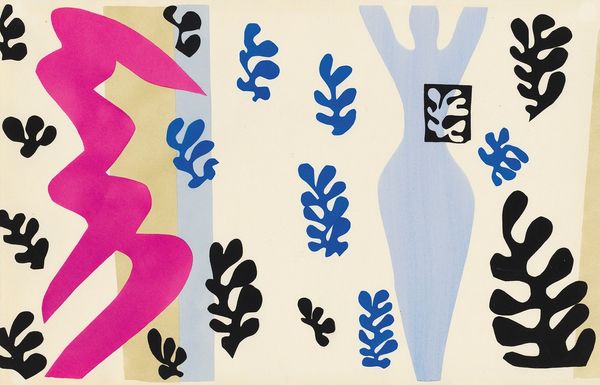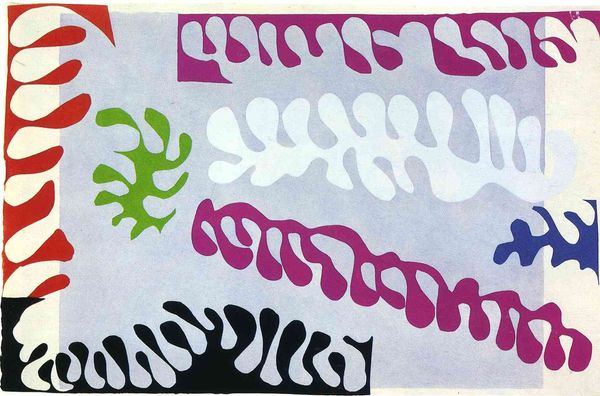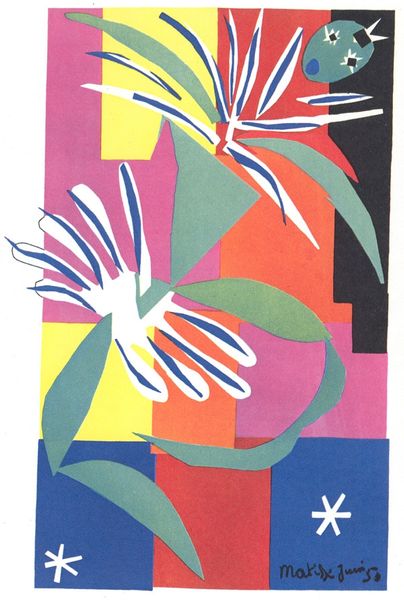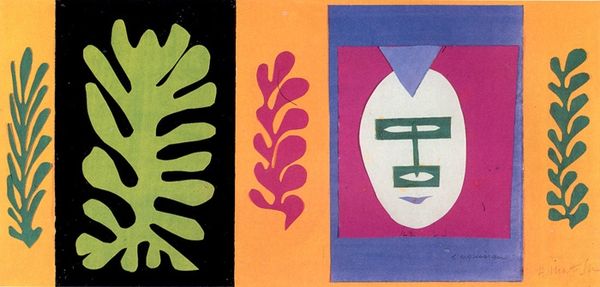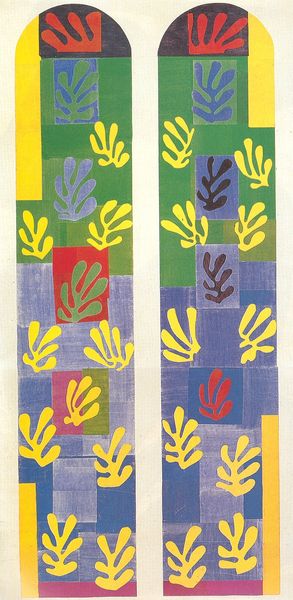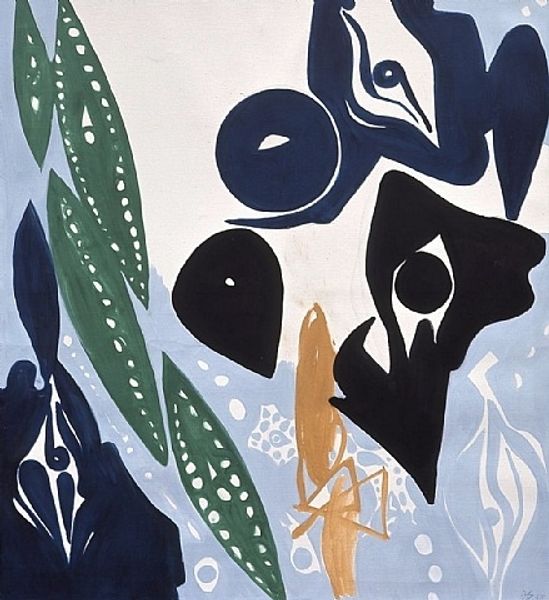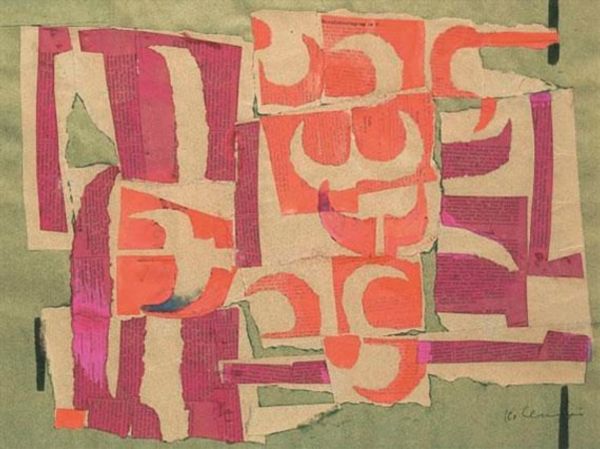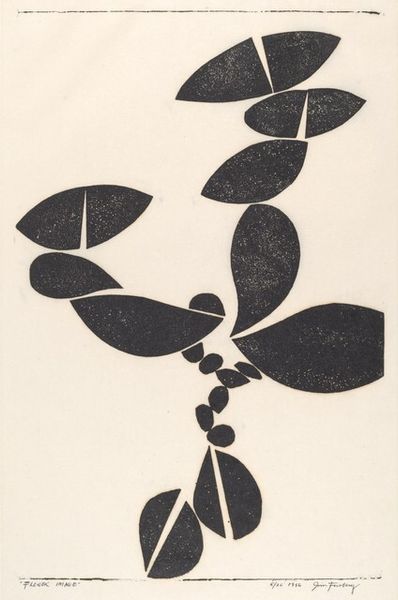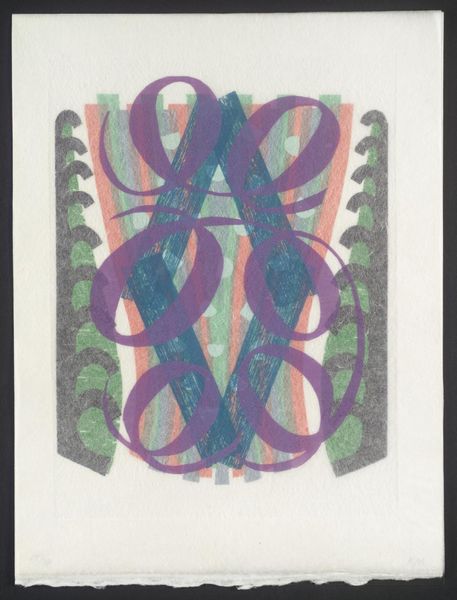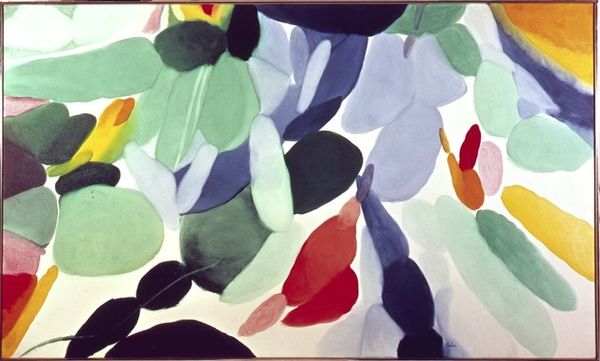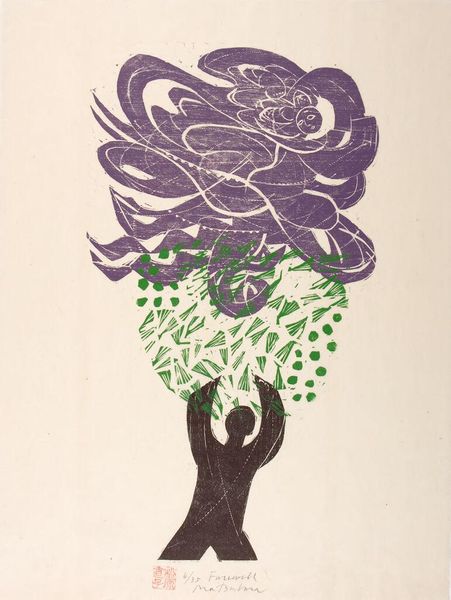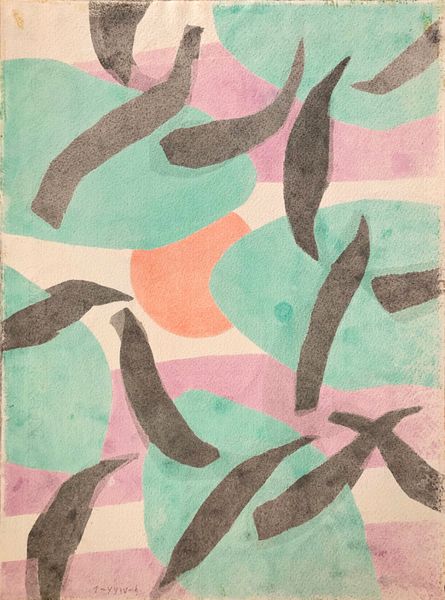
collage, paper
#
collage
#
paper
#
abstraction
#
modernism
Copyright: Henri Matisse,Fair Use
Editor: So this is "The Knife Thrower," a 1947 paper collage by Henri Matisse. It’s more playful than I expected; the colors are bright, and the shapes feel almost like musical notes scattered across the page. How do you interpret this work? Curator: "Knife Thrower," indeed. It’s fascinating how Matisse evokes a performance, a drama, through these simplified forms. The undulating magenta shape – is it the performer, the energy, the act itself? Notice how he frames it with those vertical bars – containing that potent force, much like ritual and performance frame raw human emotion. Do you see any echo of earlier artforms or traditions in these shapes? Editor: Hmm, not immediately? Are you suggesting it harkens back to, say, cave paintings or something? Curator: Precisely! Think of prehistoric art, where symbolic representation communicated entire stories and beliefs through the simplest gestures. The organic forms here, these leaf-like shapes scattered around, recall a connection to nature. Then consider that the simplified human figure and square symbol, create a sense of control amid chaos; it echoes how we impose order onto the natural world through art. Do you feel a rhythm or structure, psychological or formal, emerging here? Editor: I see what you mean about order. Now the shapes do seem arranged deliberately, balancing that wild magenta form. And yes, I suppose the square on the right could suggest a constructed space, or a kind of target even. Curator: The target, exactly! Matisse is playing with layers of meaning. The “knife thrower,” if that's who or what the Magenta represents, launches both skill and vulnerability. It mirrors something fundamental in the human psyche. Editor: I hadn't considered the vulnerability. This artwork feels far more complex than I initially thought. Curator: These symbols, drawn from memory and emotion, resonate across time and cultures. We see echoes of shared human experience embedded in the artwork itself, it transcends a singular moment or context.
Comments
No comments
Be the first to comment and join the conversation on the ultimate creative platform.
